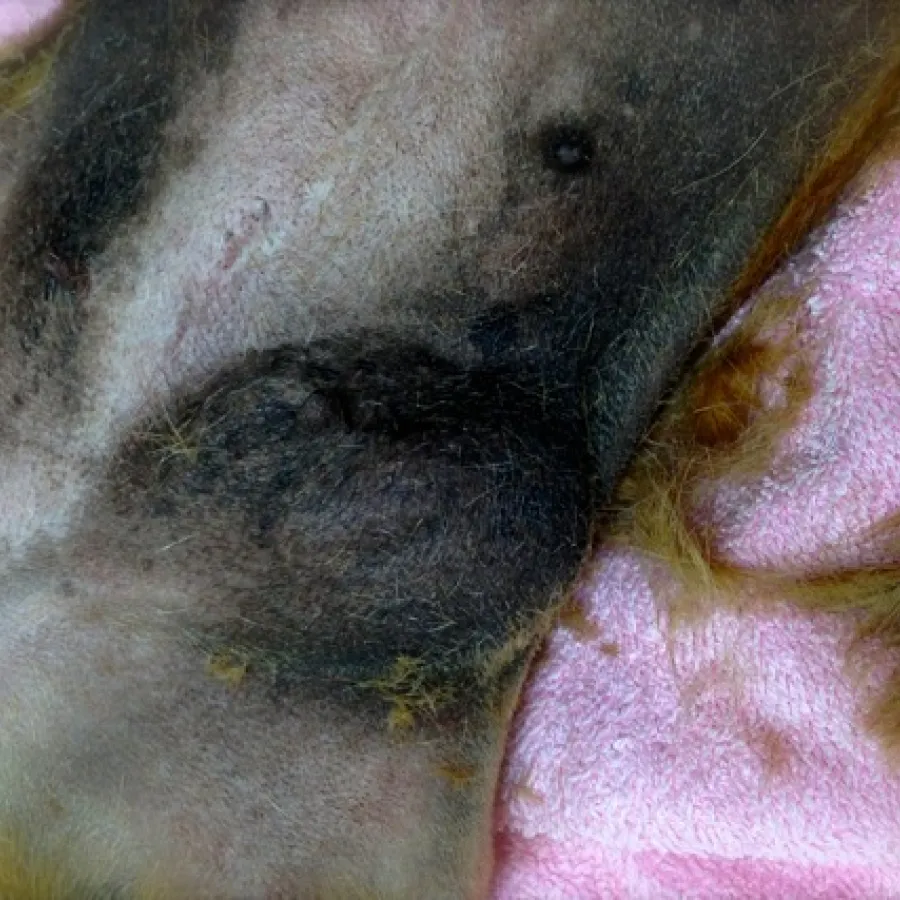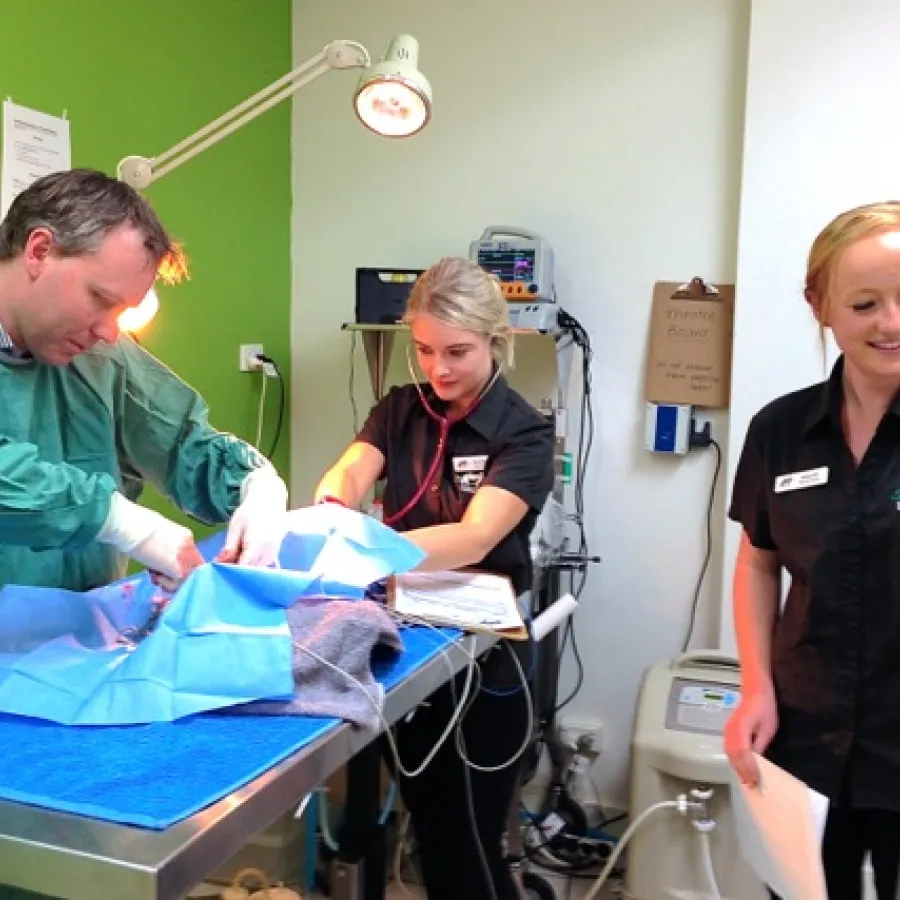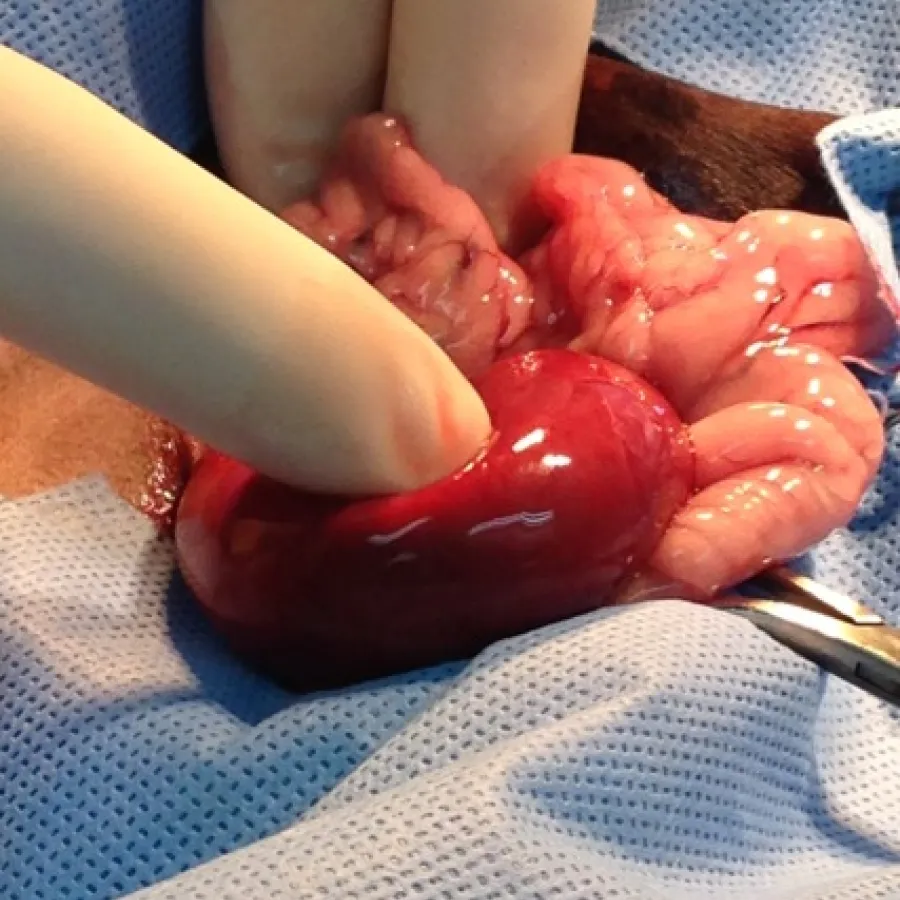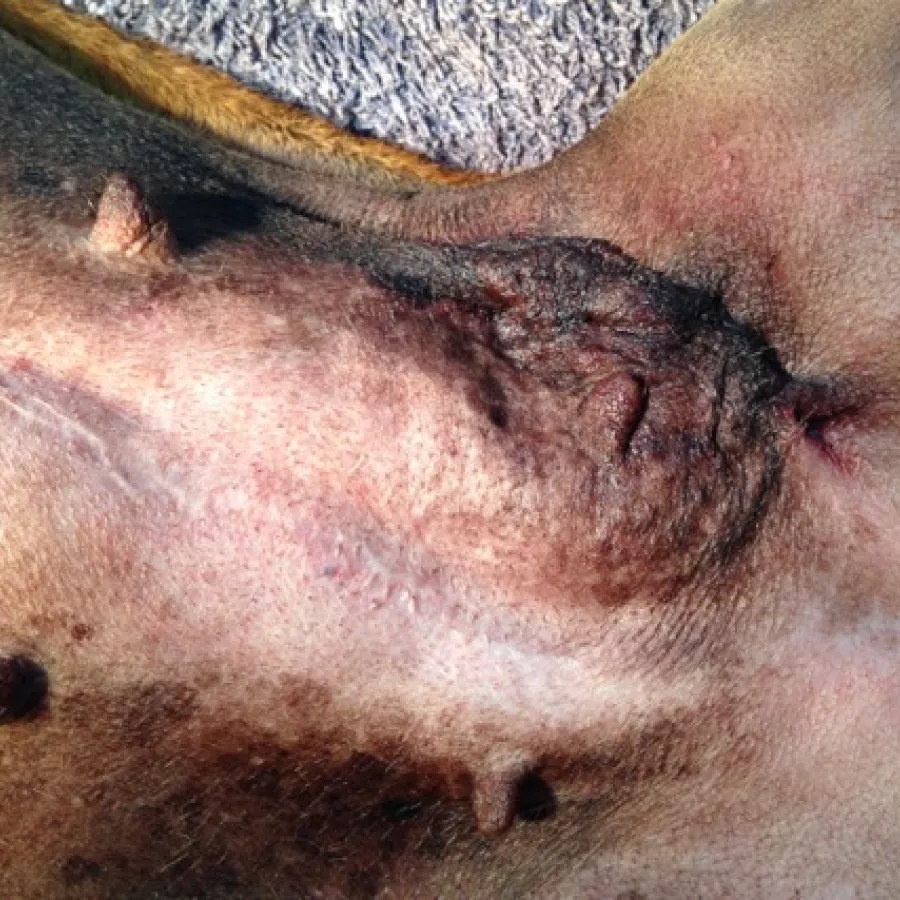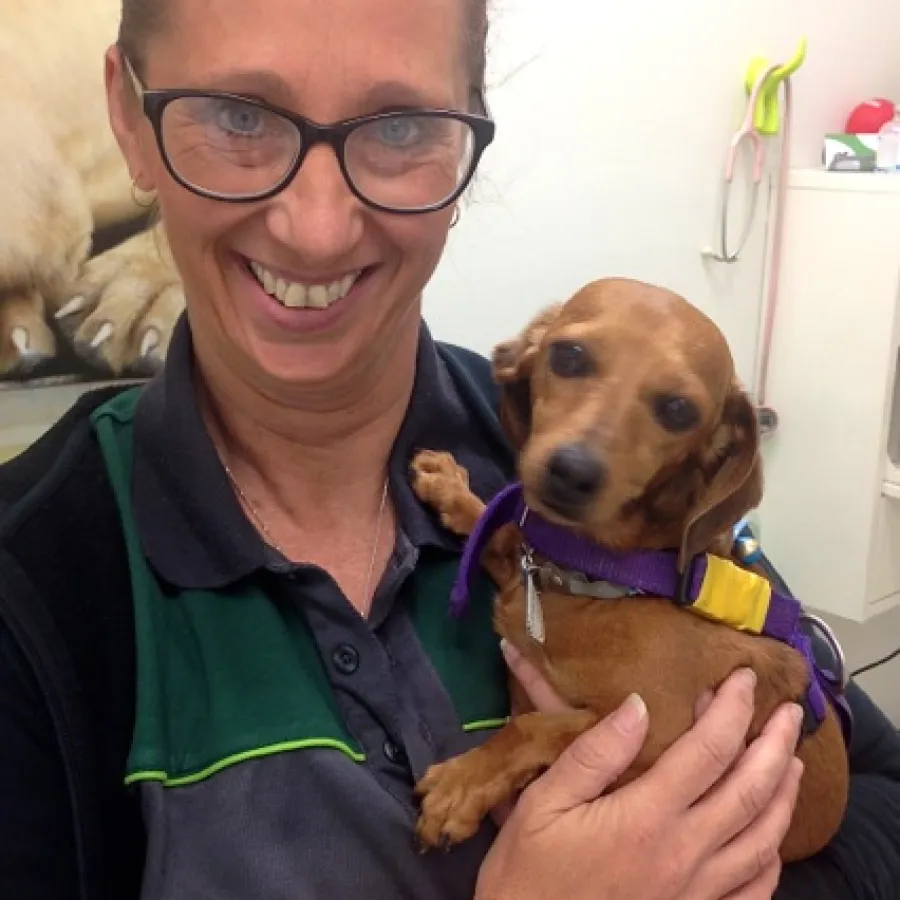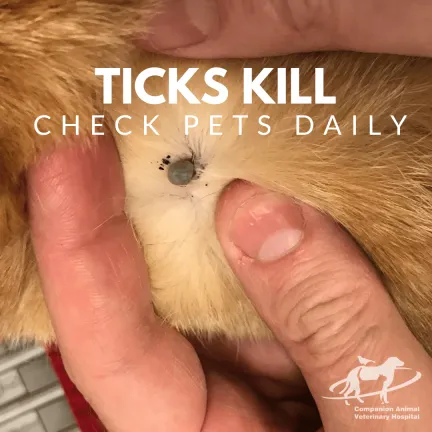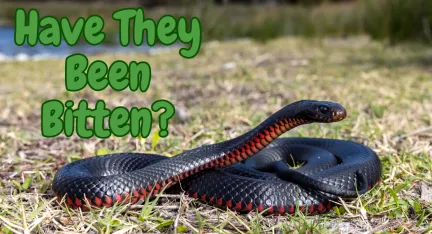Daisy came to visit me last month because she had became extremely unwell overnight. She had been vomiting alot and was in pain and reluctant to move around. When I examined her she was extremely dehydrated and she was very painful in her belly. In her groin we found a large swelling that was painful to touch. I did an ultrasound on it and found that it contained gas.
Based on these findings she was diagnosed with a strangulated inguinal hernia.
What is an inguinal hernia?
A hernia is a defect in the wall of the belly (abdomen) which results in a pouch forming where the lining of the abdomen (the peritoneum) forms a hernial sac and allows the contents of the abdomen escape into the hernial sac.
Hernias are classified according to their location. An inguinal hernia occurs in the groin. There are 3 muscles in the groin which have a small gap in them. In some dogs this gap is too large and a hernia forms.
Why is a hernia dangerous?
If there is just a small amount of fat in the hernia and it has a good blood supply the hernia is not harmful. If there is any increase in pressure in the abdomen (eg pregnancy or coughing) then organs from the abdomen can be pushed out into the hernia. If the organs have their blood supply constricted they swell up and get strangled where they come out into the hernia. This is termed a strangulated hernia.
Daisy had a strangulated hernia. The hernia had increased in size, and was painful. These are the typical signs if a hernia becomes strangulated.
Surgical repair
Surgery is the only way to repair a hernia. The surgery has several steps:
- The hernial sack is opened
- The contents of the hernia are returned to the abdomen
- The hernial sac is removed
- The hole in the muscles is stitched to close it
When I opened Daisy's hernia I found that part of the large intestine had entered the hernia and was strangulated. Fortunately we had seen Daisy quite quickly so there was no long term damage to her gut. If left too long the gut loop can die which can ultimately result in the death of the animal.
As well as the gut there was also a large piece of omentum (a large membrane in the abdomen). In order to get the organs back into the abdomen I first had to enlarge the hernia so I was able to get them back through into the abdomen.
The hernial sac was removed and the hernia was stitched up.
I am pleased to report that Daisy was much better the next day and happily went home with her mum Natalie.
Read more articles
- Log in to post comments


